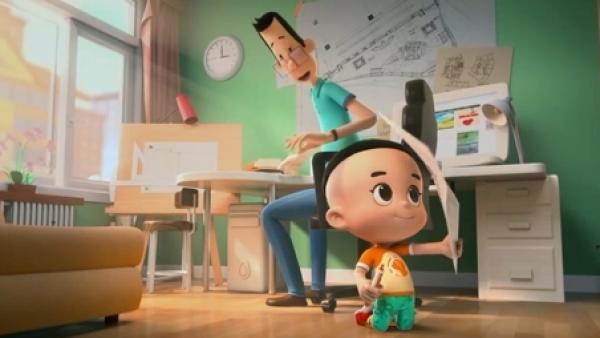
The movie "Heavy Rain", released on January 12, is director Bu Sifan's second feature film.
The story tells the story of father-son love and mutual redemption between the wronged wanted criminal Oguzi and the abandoned baby Mantou. In the film, the "official man" does not hesitate to force a civilian father and son to die in order to snatch treasures for fun; in order to survive with his son, Oguzi boarded the ancient ship of the dead and was reborn on a rainy night to change his life.
The core scene of the film, "Drum Boat", gathers forces from all sides: the Liu family's army is the upper-class plunderers, and the night feather birds symbolize natural resources; the plundering of the upper class has produced a series of disasters, and the Drum Boat is the epitome of disasters in the world. Like a "miniature society", some people are willing to become monsters to change their situation, while others stick to their ideals and refuse to compromise.
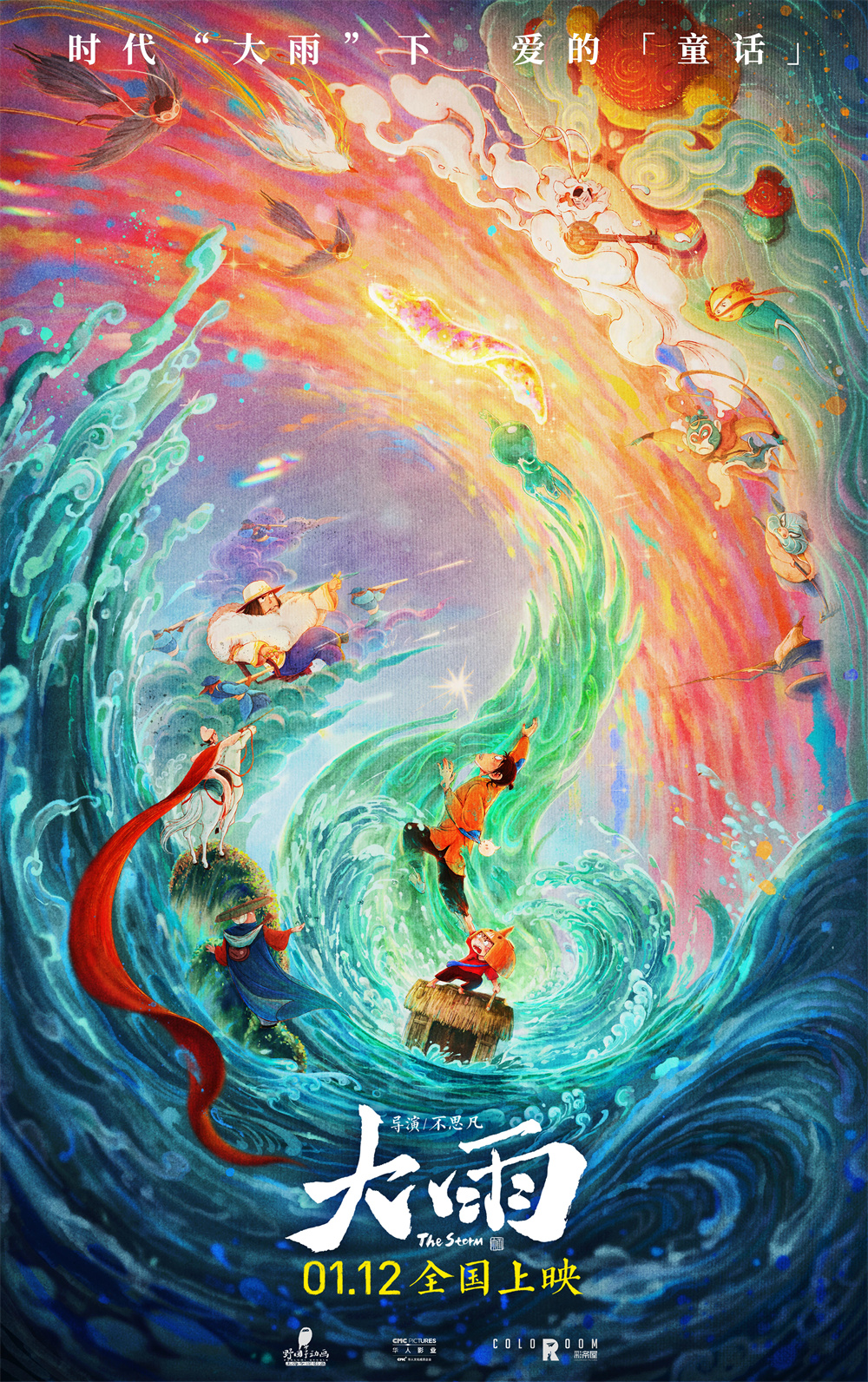
"Heavy Rain" poster
The title "Heavy Rain" is the core image and creative source of the entire film, from "The world is unkind and treats everything as a humble dog" in "Laozi" to what Lao She wrote in "Camel Xiangzi", "It rains for the rich." The rain also rains on the poor, on the righteous, and on the unjust. In fact, the rain is not fair, because it falls in a world without justice." This image also becomes the timeline throughout the entire film, From the day before the rain, during the rain, and the day after the rain, it tells the story of the past and present life of the entire world in Bu Sifan's mind.
Bu Sifan joked that he could describe Heavy Rain’s art style in one word, and that would be “earth”, an earthy smell that is close to nature. The scenes of the film were shot in Taishun, a mountainous area in Wenzhou, Zhejiang. The streams, moss and stone roads are full of the Zen beauty of Jiangnan mountain villages. According to reports, more than 90% of the "Heavy Rain" team members are from Jiangnan water towns. Bu Sifan and art director Xiao Yueban both grew up in mountainous areas. Using animation to restore the beauty of Chinese countryside is the aesthetic pursuit of this animation.
On one side is a down-to-earth "earth", on the other side is an imaginative "flying". The world view and character settings in "Heavy Rain" are still full of dark imagination. The drum boat is like a water parked in Liangshan, gathering all kinds of wandering people.
In Bu Sifan's conception, each character has his or her own complete story line: Xiao Lou, who wears a clown face and is eerie and weird, is the first mate in the ship; the fairy brother Mu Yingzhi is like a mist floating in the ship. They are dead souls lost in their own ideals. The character performances are exaggerated and unique, and those who are interested can also find that there is a subtle connection and echo between the protagonist Steamed Bun and the Great Protector.

"Heavy Rain" hidden easter eggs, steamed buns and the Great Guardian have the same pet
"Heavy Rain" has been 6 years since Bu Sifan's last movie "The Great Protector".
When "The Great Protector" was released, it was packaged by Caitiaowu as the third "big" Chinese comic masterpiece after "The Return of the Great Sage" and "Big Fish and Begonia". In fact, the more obscure narrative and niche issues made the film perform poorly at the box office at the time. However, due to its content, "The Great Protector" is still mentioned by many Chinese comic fans many years later, and is even regarded as the strongest "White Moonlight" in their hearts.
He is no longer an old man in the animation industry. He is a member of the "Flasher" generation who is active on the Internet during the millennium. In 2004, he directed his first animated short film "Blackbird", thus launching his career as an animation director. The sharp and concise style of "Blackbird", as well as its cleverness and clumsiness, left a deep impression on many netizens, so much so that fans on Bilibili, Douban and other platforms have never forgotten this "pit".
Bu Sifan did not come from a professional background. After graduating from technical secondary school, he got a job in a telecommunications bureau and worked there for thirteen years. But he had a dream of being a cartoonist since he was a child, and he never gave up drawing cartoons even during the years when he was "assigned to the countryside" to work in the telecommunications bureau. When flash technology began to become popular, he also tried to use flash to publish his comics on the Internet. After gaining an audience of readers, he mustered up the courage to throw away his iron rice bowl and set up an animation company in Hangzhou. From then on, he became An animation director.
If we say that in recent years, the slogan of "The Rise of Chinese Comics" corresponds to the improvement of the level of a group of emerging animators who have devoted themselves to the animation industry, Busifan is a representative of a group of "rising" creators who are rich in authorship. . "Heavy Rain" has both the part where Bu Sifan continues himself and the part where he breaks through himself.
Compared with "The Great Protector", "Heavy Rain" is much gentler, and the relationship between father and son is more clearly run through the film. In the name of searching for his father, Mantou "guides" the audience through the fantasy of the opera drum boat from filth to clarity. world. At the same time, the various metaphors in the film still maintain extraordinary sharpness and anger. He said, ""The Great Protector" is my thinking about human nature, and "Heavy Rain" is my understanding of the world."

"Heavy Rain" character posters, steamed buns
Another special feature is that "Heavy Rain" is completed using two-dimensional hand-painting. You know, this kind of "film handicraft industry" is now as rare in the industry as "protecting animals". Two-dimensional animation requires hand-drawing frame by frame, which is more time-consuming and labor-intensive than three-dimensional animation. As long as a scene is changed to a different angle, the relationship between distance and distance, changes in light and shadow, and the movement patterns of the characters need to be reconsidered.
Bu Sifan once won the "Oscar of the Animation Industry" at the Annecy Animation Film Festival in France for his ink-style short film "White Bird Valley". The art style of splash-ink landscape has always been his strength. In "Heavy Rain", the green of Cangjia, the blue of Qingming, the yellow of leaves, the white of Qingluan...the beauty of the East and the agility of Jiangnan landscape are all integrated into the soul of "Rain".
At the same time, "Heavy Rain" has also been significantly upgraded at the industrial level. When "The Great Protector" was created, Busifan's team only had 6 employees, and now the team has grown to more than 30 people. From "The Great Protector" to "Heavy Rain", the number of single-frame layers has been upgraded from single digits to over 400, and the number of special effects shots has been upgraded from 81 to 685. In "Heavy Rain", only a single shot took up to 200 days to produce.
But Bu Sifan actually admitted that such an "upgrade" had become a source of distress. He mocked himself as a "poor director" who was "accustomed to creating with restrictions in barren soil, and he didn't seem to know how to spend money to make the film better." Therefore, the process of creating "Heavy Rain" became a journey for him. New learning and experience.
During the release of the film, Bu Sifan accepted an exclusive interview with The Paper and talked about the aesthetic concepts of an authorial animation director from "The Great Protector" to "Heavy Rain", as well as the challenges faced by the dual changes in the inner and external environments. and thinking.

"Heavy Rain" stills
【dialogue】
Let the rain "perform"
The Paper : Where did the inspiration for the story of "Heavy Rain" come from? How did you come up with this story?
Bu Sifan : The earliest ideas came from many aspects. In terms of content, maybe I have never been able to let go of the strong impact of the pollution of the beautiful mountains and waters in my hometown, and the destruction of the environment. I imagine that after a heavy rain, the pollution will fade away and the mountains and water will be washed clean. This kind of imagination made me have an emotional impulse that I really wanted to describe about heavy rain, and I wanted to trace the source of pollution, what kind of interests are driving it, and the impact of catastrophic consequences on all ordinary people. Imagine.
At the same time, we want to have some breakthroughs and challenges in animation technology, such as the shape of water. Heavy rain is a big background for the film. At the beginning of the film, it is the accumulation of transparent water vapor in the sky. The film takes place in one day, from about to rain, to the middle of the rain, to the violent storm, to after the rain. All stories revolve around the concept of rain.
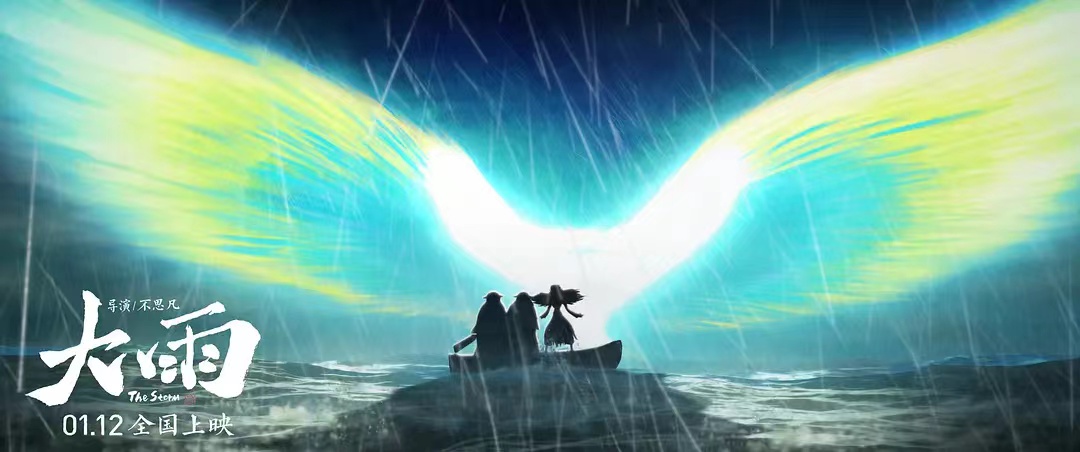
"Heavy Rain" stills
The Paper : How to interpret the image of “heavy rain”?
Don’t think about the ordinary : Combining Laozi’s saying, “Heaven and earth are unkind, treating all things as stupid dogs” and Lao She’s saying, “Rain falls on the rich as well as on the poor, on the righteous as well as on the unjust. In fact, it rains. It’s not fair, because we live in a world without justice.” Such content involves the combination, development and exploration of some images.
We designed a dark and cold world, where two people walking in front of each other rely on each other under the heavy rain. The faint flash looks very small, but when you are in it, the warmth of mutual love will touch people's hearts.
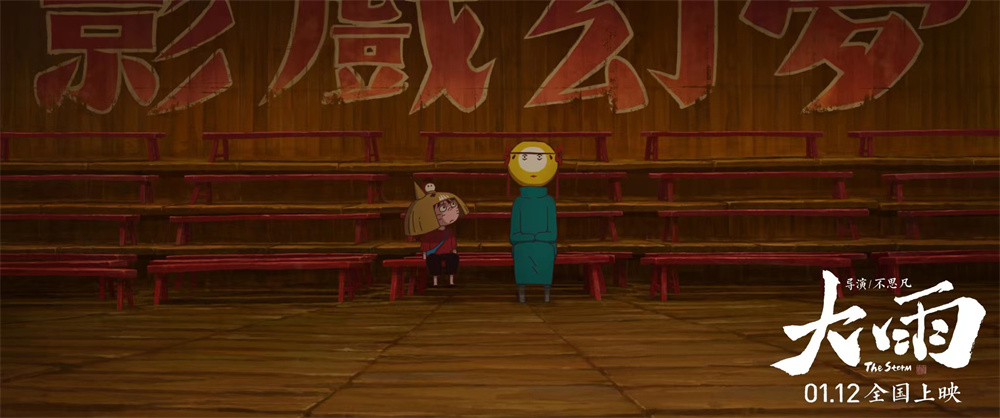
"Heavy Rain" stills
The Paper : What efforts and innovations have been made to express "heavy rain" in the animation, and what are the difficulties?
Bu Sifan : It is difficult to use animation to express some uncertain things. Today's technical means have many different expression techniques. We are still based on the most traditional method. A large number of performance parts are completed by hand drawing. In three dimensions, as long as you give it physicality, it can present a very good physical reality. In two dimensions, it will be more difficult to draw it completely in line with physics, but the expressive tension will be much stronger.
At the beginning, we tested the performance of some water splashes through one or two shots, and we thought it was okay at the time. But when the whole story unfolded and a lot of water appeared in the play, we found that the invisible manifestations in every corner were all kinds of strange. Things were far from simple as imagined. For example, how did the water flow through the wall, and how did the rain fall? Each person's performance, and in order to express emotions, we have to consider letting these water droplets strengthen the emotions we need through "performance". These places may be the work we spend a lot of effort on.
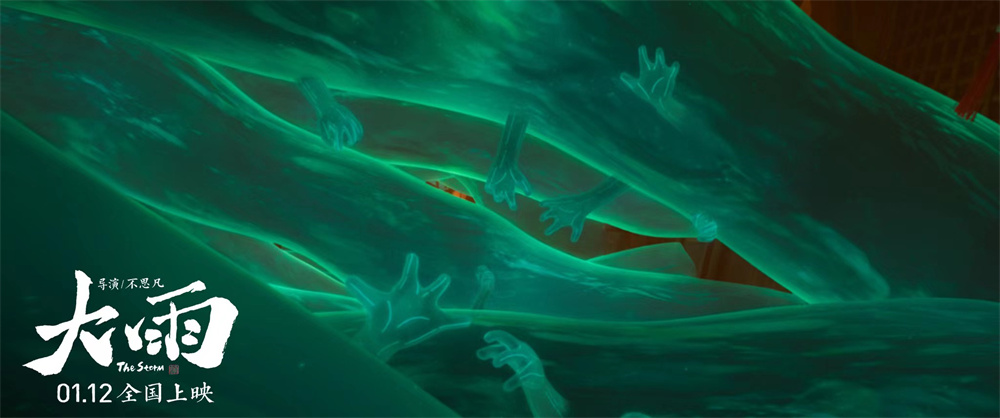
"Heavy Rain" stills
clumsy sincerity
The Paper : In the past few years, when new animation techniques have been introduced one after another, "Heavy Rain" was also produced using two-dimensional hand-painting. Why do you have this obsession?
Busifan : It may not be called obsession. You can say it is persistence, or it can be said to be conditional restrictions. 2D has its advantages and disadvantages. With the reduction of practitioners, the difficulty of production is slowly increasing. However, the advantage of 2D is in the expression of images, which will be more accurate and contagious. Our starting point is here. In many cases, this does not exclude 3D. Some 3D technologies are also used in "Heavy Rain", including the use of 3D and 2D in some pictures. I think the most important point is that for us, we don’t have to worry about what kind of technology to use to explain it. It’s just that we may be better at the two-dimensional aspect at the moment.
The Paper : Over the years, I have been hearing that it is difficult to retain two-dimensional talents in this industry. What is the situation of your own team?
Bu Sifan : The loss of 2D animation talents is actually not just our country, the whole world is facing the same problem, because it is indeed not very efficient, takes a long time, and is difficult to industrialize. To achieve two-dimensional output, it means that your painters need to have enough time to grow. In an era of pursuing efficiency, it is difficult to have both.
After "The Great Protector", we also formed a new team and recruited a lot of college students. To be honest, these college students are not actually that strong in technical ability, but they are very sincere in creating works. Maybe some clumsiness can be seen in the finished film, but I feel that there is a kind of clumsy sincerity in it, which gives the work some special flavor. I myself can feel the power of this sincerity, which seems to make "weakness" more effective.
The Paper : When I read "The Great Protector" and other early works of yours, I found that the battle scenes were handled very concisely. Is this your aesthetic concept or is it due to budget constraints?
Bu Sifan : Back then, someone commented that "The Great Protector" was a "poor" work. When we were working on "The Great Guardian", there were only three people at the beginning, and the company only had six people when we finished it. It really took a lot of effort to control all aspects on the basis of being able to complete it.
One of the methods is the design of the storyboard. For example, I usually express a sharp thing, the beginning of an action, by switching the camera, and then switch to the fall of an action in the next shot, omitting the action shot in the middle. , no need to get entangled with those complicated production methods. Including our scenes, because of the lack of people, the art director Xiao Yueban went to study an aesthetic system. I asked that I have to draw three pictures a day. With such a large workload, I had to develop a set of the most concise and effective methods. In the end, I To integrate all aspects of expression means, a work like "The Great Protector" is presented.
The Paper : It does seem that "Heavy Rain" has a much larger budget and more action scenes. Is this a challenge for you?
Bu Sifan : The conditions for "Heavy Rain" were relatively much better, and accordingly it aroused some of my "ambitions". Things that I might not have been able to achieve back then, or even things that I couldn't even imagine at the time, I now have the conditions to do. It also brought a lot of trouble to myself. As a result, in the process of doing it, I found that the constraints of the previous conditions were actually some abilities that I possessed.
After meeting the conditions, I went to a world I had never set foot in. I found that I didn’t know how to spend money or how to use funds to make the work better. The previous creative process, the experience of spending a lot of effort in creating in a barren environment, is no longer applicable to new projects. I have to learn a new creative process all over again.
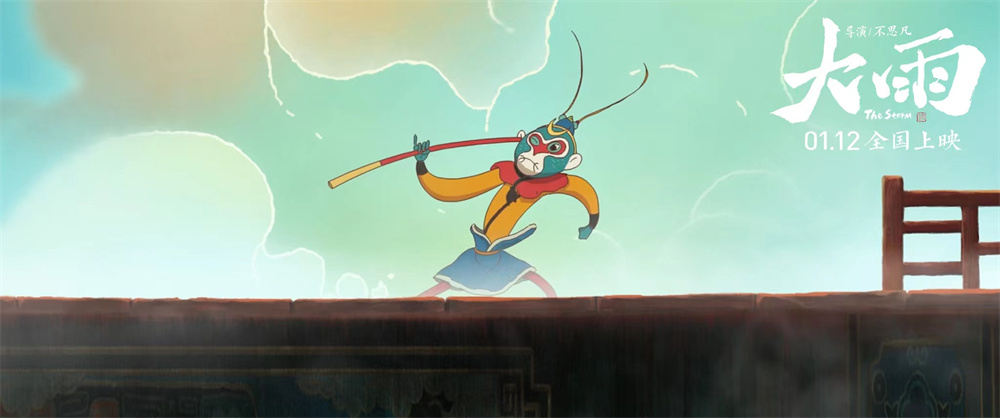
"Heavy Rain" stills
The "bridge" of warmth
The Paper : Many people said they didn’t understand “The Great Protector” back then. Will this make you rethink the relationship between creation and the audience?
Bu Sifan : "Heavy Rain" is an attempt to respond to these opinions and feedback. To be honest, I wasn't aware of this problem at the time. It was only after it was released that I realized that so many people said they couldn't understand it. When I am in a team or chatting with friends, I gradually realize that it is difficult for the other party to understand the true meaning of what I am saying.
Therefore, the original intention of creating "Heavy Rain" also contains my desire and attempt to create content that is more common and easier to understand, and use it as a bridge to enter a story system. Entering from the perspective of a father and son, we also hope that the audience can understand the line closest to them.
The Paper : But you won’t be satisfied with just telling a warm story, so that’s not you.
Bu Sifan : I don’t think that’s a straightforward statement. The other part is the harm people do to the world and the impact they have on the people around them while pursuing interests. I am still talking about these things. Maybe whether the audience understands, understands or does not understand these things will not affect the entire movie viewing. process and emotional experience. Some viewers may feel that ordinary stories are not that satisfying and would rather have some content to think about, so just let different viewers capture what they want.
The Paper : "Heavy Rain" and "The Great Protector" actually talk about a certain issue of world "order". You yourself have said that this movie is your understanding of the world, so how do your works reflect your worldview?
Bu Sifan : My own way of understanding the world is to look at the relationship between each individual and the world. In my opinion, human beings usually act driven by desire, leading to a series of consequences and reactions, even leading to destruction, and then a new order is created, and this continues for countless reincarnations, large and small. It seems that this is the simplest world background structure, and it can be established anywhere. In the world view of "Heavy Rain", in terms of background, I conceived a very simple reincarnation process, and explained it through a day of rain in one place.
The Paper : Do you think you are a person with a clear mind? Many people say that your work is very dark. What do you think of this assessment?
Bu Sifan : First of all, when it comes to my imagination, it’s not that my imagination is any more amazing than others, it’s just that I’m a little dissatisfied. For example, when I create a piece of content, if I find it seems familiar, I will particularly want to break it. And when I spend a lot of energy to "break through" some inherent concepts, it may seem to others that my ideas are very strange, but it is actually the result of the requirements for creation. I just don’t really like clichés and things that are familiar.
When talking about darkness, my understanding is that I will describe the reality more straightforwardly. I don't like playing around with things that make people uncomfortable. Most animation may revolve around relatively fantasy and beautiful things, but when it is very straightforward and points to something real, it may give people an uncomfortable feeling. If it is defined as "dark" in this way, I will accept it, because many times, I really don't seem to be able to package and whitewash it.
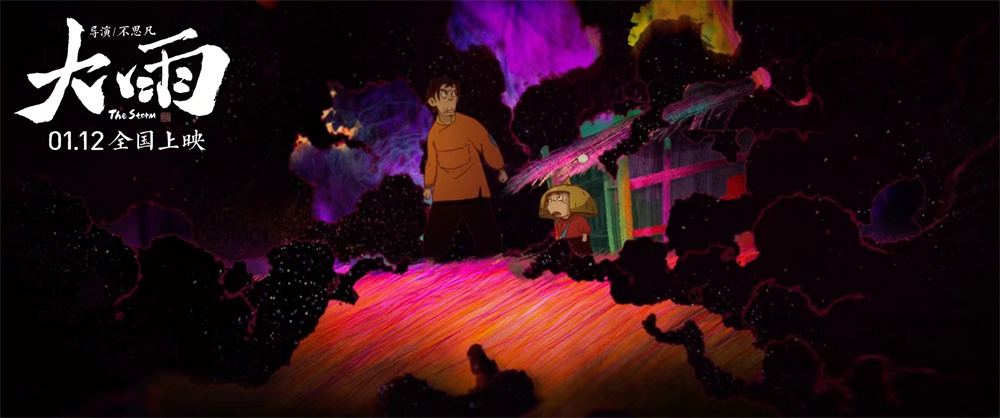
"Heavy Rain" stills
Deliberately preserved “tinder”
The Paper : Before you became an animation director, you worked at a telecommunications company for 13 years. What was your situation like at that time?
Bu Sifan : At that time, I was still quite casual, and sometimes I would play every day. Suddenly one day I realized why after so many years, I didn’t seem to do anything. I just painted day and night for a period of time, and went to work during the day. I painted until midnight at night. Sometimes after finishing the work and posting it online, I received some supportive voices and gained a short-term confidence. But after the confidence passed, I found that nothing had changed, and I felt that it was meaningless, so I messed up again. The ups and downs are probably repeated in this process, sometimes playing desperately, sometimes painting desperately.
The Paper : After entering the theater creation system, have you changed from the Bu Sifan in the Flash era?
Bu Sifan : If we talk about changes, it is the changes in my personal understanding of the world. When I was young, like all young people, I did things with ideals and enthusiasm. At that time, I wanted to be a cartoonist. Maybe I simply looked at the aura of cartoonists and wanted to be that kind of person.
During this process, I found that both the inner and outer environment were changing, and there were some qualitative changes in my thinking at different times, but I believe that the core part of me has not changed, and I still want to express my views on the world. Looking back at the past ten years in the telecommunications company, it seems that what I wanted to do in my heart at that time is what I still want to do now, without interruption.
Even during the more than ten years when my living space was very barren, and during the process of changing careers several times, I kept a certain kind of "fire" in myself in different ways. Although there were times when I drifted away in the process, I had doubts about this. There is no possibility, but no matter what, it will eventually slowly reach the current state.
The Paper : In the six years from "The Great Protector" to "Heavy Rain", how would you describe this process?
Bu Sifan : "The Great Protector" to "Heavy Rain" were probably the stages in my life where I gained the most insights. Before "The Great Protector", I was always moving forward, on the journey to pursue my goals. After "The Great Protector", it seems that I have reached a point in my life where the environment you are accustomed to has changed. My inner world and external environment have completely unfolded. At the beginning, I still used the previous thinking logic to promote new creations, and inevitably encountered many brand-new problems.
During the creative process, we may have greater ambitions. But in a very unfamiliar world, we did not have insight into the gap between our abilities, experience, and ambitions at the time, so we encountered a lot of trouble during the entire creative process, and only then did we discover that we had many things that we did not possess. ability. The whole process is an exploration of the unknown world and the unknown self, and there were even times of great despair. Looking back now, this is also a very typical growth process. Fortunately, with the help of many people, we also completed "Heavy Rain".
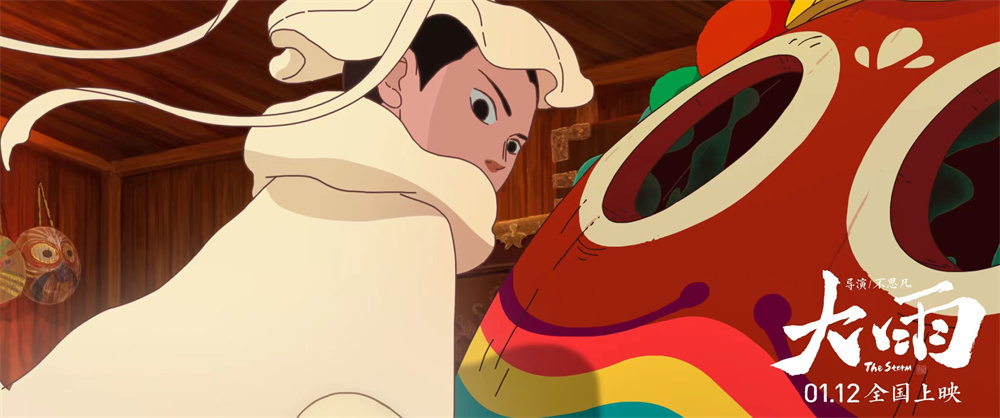
"Heavy Rain" stills
The Paper : There were a lot of “holes” in your previous works. How do you view your creative habits? Is it some kind of thing where you have to do whatever you think of first, regardless of the consequences?
Bu Sifan : First of all, it is definitely not a "habit", that is, my creation will start relatively quickly. Those works do not mean that they cannot be completed, but because after the work starts, I may get new opportunities. After a period of time, I will Off to do something new. I have a philosophy that doing something is definitely better than not doing it.
Over the years, I have seen many people research for many years in order to make something, but in the end it was over without even starting. I have to insist on creating, that is, never stop. During the break between creation, if I have inspiration or another opportunity, I may do it again, and the original project may be temporarily discontinued. In this kind of non-interruption, there will be some things that will be seen as "pits" later.
The Paper : Do you occasionally think back to those pitfalls and think about filling them in one day? There are also many people calling on you to fill the hole.
Bu Sifan : Those pitfalls are like this... Let me give you an example. When I first made "Blackbird", I thought it was still pretty good. Even a few years later, many viewers still said, "When will you make it?" The pitfalls of "Blackbird" have been filled. I actually did two episodes later, but never released them, because in the context of the times, watching "Blackbird" was very enjoyable. A few years later, those technical means, including the description language, were already outdated.
The audience retains the feeling of watching it at that time, but the creator must clearly realize that that technique is no longer suitable for the new era. I think it makes no sense to use the same technique to fill it. Of course, if there is another method, such as making a big movie of "Blackbird" and asking me to tell the story of Blackbird, I may be more willing to try it.


